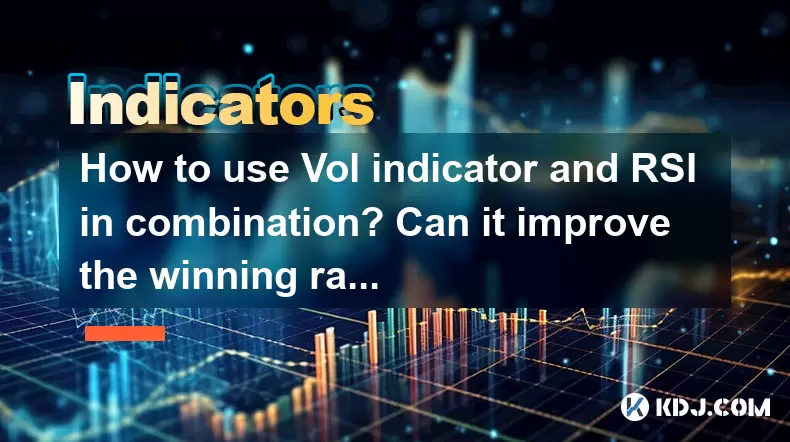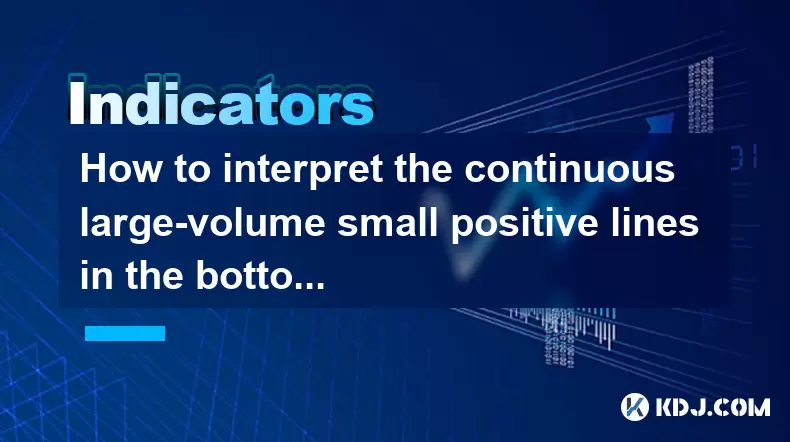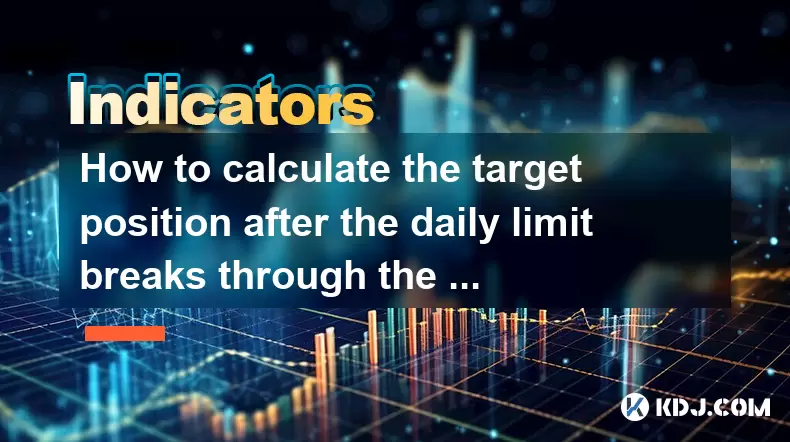-
 Bitcoin
Bitcoin $101,898.5005
-0.75% -
 Ethereum
Ethereum $2,258.1125
-1.07% -
 Tether USDt
Tether USDt $1.0004
0.01% -
 XRP
XRP $2.0178
-2.93% -
 BNB
BNB $624.0243
-1.53% -
 Solana
Solana $134.3298
-0.90% -
 USDC
USDC $0.9999
0.01% -
 TRON
TRON $0.2675
-2.05% -
 Dogecoin
Dogecoin $0.1538
-1.96% -
 Cardano
Cardano $0.5482
-1.11% -
 Hyperliquid
Hyperliquid $35.5636
5.45% -
 Bitcoin Cash
Bitcoin Cash $453.4902
-1.66% -
 Sui
Sui $2.5134
-2.97% -
 UNUS SED LEO
UNUS SED LEO $9.1292
1.77% -
 Chainlink
Chainlink $11.8457
-1.60% -
 Stellar
Stellar $0.2312
-2.73% -
 Avalanche
Avalanche $16.9721
0.29% -
 Toncoin
Toncoin $2.7549
-3.82% -
 Shiba Inu
Shiba Inu $0.0...01081
-1.10% -
 Litecoin
Litecoin $80.8250
-0.71% -
 Hedera
Hedera $0.1374
0.21% -
 Monero
Monero $305.4827
-2.36% -
 Ethena USDe
Ethena USDe $1.0006
0.00% -
 Dai
Dai $1.0000
-0.01% -
 Polkadot
Polkadot $3.2085
-3.12% -
 Bitget Token
Bitget Token $4.0845
-3.13% -
 Uniswap
Uniswap $6.3353
-1.63% -
 Pi
Pi $0.5085
-0.70% -
 Pepe
Pepe $0.0...08913
-3.82% -
 Aave
Aave $232.7090
-0.58%
How to use Vol indicator and RSI in combination? Can it improve the winning rate?
Combining Vol indicator and RSI can provide a comprehensive view of market conditions, potentially improving traders' winning rates in cryptocurrency trading.
May 23, 2025 at 11:49 pm

Introduction to Vol Indicator and RSI
The Volatility (Vol) indicator and the Relative Strength Index (RSI) are two popular technical analysis tools used by traders in the cryptocurrency market to make informed trading decisions. The Vol indicator measures the rate of price movement over a given period, helping traders identify the market's volatility. On the other hand, the RSI is a momentum oscillator that measures the speed and change of price movements, typically used to identify overbought or oversold conditions in the market. When used in combination, these indicators can provide a more comprehensive view of market conditions, potentially improving the trader's winning rate.
Understanding the Vol Indicator
The Volatility (Vol) indicator is crucial for traders who wish to understand the intensity of price movements in the cryptocurrency market. It is typically calculated as the standard deviation of price changes over a specified period, often 10 to 20 days. A high Vol value indicates a more volatile market, which can signal potential trading opportunities but also higher risk. Conversely, a low Vol value suggests a more stable market with less price fluctuation.
Traders use the Vol indicator to gauge market sentiment and to set appropriate stop-loss and take-profit levels. For instance, during periods of high volatility, a trader might widen their stop-loss levels to avoid being prematurely stopped out of a position. Similarly, they might set more aggressive take-profit levels to capitalize on larger price swings.
Understanding the RSI
The Relative Strength Index (RSI) is a momentum oscillator that ranges from 0 to 100 and is typically used to identify overbought or oversold conditions in the market. The RSI is calculated based on the average gain and loss of price changes over a specified period, usually 14 days. An RSI value above 70 indicates that an asset may be overbought, suggesting a potential price correction. Conversely, an RSI value below 30 indicates that an asset may be oversold, suggesting a potential price rebound.
Traders use the RSI to identify potential entry and exit points in the market. For example, a trader might consider buying an asset when the RSI falls below 30, anticipating a price rebound. Conversely, they might consider selling an asset when the RSI rises above 70, anticipating a price correction.
Combining Vol Indicator and RSI
Combining the Volatility (Vol) indicator and the Relative Strength Index (RSI) can provide traders with a more comprehensive view of market conditions, potentially improving their winning rate. By using these indicators together, traders can identify high-probability trading opportunities and manage risk more effectively.
For instance, a trader might use the Vol indicator to identify periods of high volatility, which can signal potential trading opportunities. They might then use the RSI to confirm whether the asset is overbought or oversold, helping them to time their entry and exit points more effectively. By combining these indicators, traders can make more informed trading decisions and potentially improve their winning rate.
Practical Application of Vol Indicator and RSI
To use the Volatility (Vol) indicator and the Relative Strength Index (RSI) in combination, traders can follow these steps:
- Select a Cryptocurrency and Timeframe: Choose a cryptocurrency and a timeframe that aligns with your trading strategy. For instance, you might choose Bitcoin (BTC) and a daily timeframe.
- Add the Vol Indicator to Your Chart: Add the Vol indicator to your chart. You can typically find this indicator in the technical analysis section of your trading platform. Set the period to 10 or 20 days, depending on your preference.
- Add the RSI to Your Chart: Add the RSI to your chart. Set the period to 14 days, which is the standard setting for the RSI.
- Analyze the Vol Indicator: Look for periods of high volatility, indicated by a high Vol value. These periods can signal potential trading opportunities but also higher risk.
- Analyze the RSI: Look for overbought or oversold conditions, indicated by an RSI value above 70 or below 30, respectively. These conditions can help you time your entry and exit points more effectively.
- Combine the Indicators: Use the Vol indicator to identify periods of high volatility and the RSI to confirm whether the asset is overbought or oversold. For instance, if the Vol indicator shows high volatility and the RSI indicates an oversold condition, you might consider buying the asset, anticipating a price rebound.
Case Study: Using Vol Indicator and RSI to Trade Bitcoin
To illustrate how the Volatility (Vol) indicator and the Relative Strength Index (RSI) can be used in combination, let's consider a case study involving Bitcoin (BTC).
- Identify a Period of High Volatility: Suppose you notice that the Vol indicator for Bitcoin shows a high value, indicating a period of high volatility. This could signal a potential trading opportunity.
- Check the RSI: You then check the RSI for Bitcoin and notice that it has fallen below 30, indicating an oversold condition. This could suggest that Bitcoin is due for a price rebound.
- Enter a Long Position: Based on the high volatility and the oversold condition, you decide to enter a long position on Bitcoin, anticipating a price rebound.
- Set Stop-Loss and Take-Profit Levels: You set your stop-loss and take-profit levels based on the Vol indicator. Given the high volatility, you might set a wider stop-loss level to avoid being prematurely stopped out of your position. You might also set a more aggressive take-profit level to capitalize on the potential price rebound.
- Monitor the Position: You monitor the position closely, watching for signs that the price is rebounding as expected. If the price moves in your favor, you might consider closing the position to lock in your profits.
Can Combining Vol Indicator and RSI Improve the Winning Rate?
Combining the Volatility (Vol) indicator and the Relative Strength Index (RSI) can potentially improve a trader's winning rate by providing a more comprehensive view of market conditions. By using these indicators together, traders can identify high-probability trading opportunities and manage risk more effectively.
For instance, by using the Vol indicator to identify periods of high volatility and the RSI to confirm whether the asset is overbought or oversold, traders can time their entry and exit points more effectively. This can help them to capitalize on potential price movements and avoid entering trades during unfavorable market conditions.
However, it's important to note that no trading strategy is foolproof, and combining the Vol indicator and RSI does not guarantee a higher winning rate. Traders should always use these indicators in conjunction with other technical analysis tools and risk management strategies to maximize their chances of success.
Frequently Asked Questions
Q: Can the Vol indicator and RSI be used for short-term trading?
A: Yes, the Volatility (Vol) indicator and the Relative Strength Index (RSI) can be used for short-term trading. By selecting a shorter timeframe, such as an hourly or 15-minute chart, traders can use these indicators to identify short-term trading opportunities. However, short-term trading carries higher risk due to the increased volatility, so traders should use appropriate risk management strategies.
Q: How do I adjust the settings of the Vol indicator and RSI for different cryptocurrencies?
A: The settings for the Volatility (Vol) indicator and the Relative Strength Index (RSI) can be adjusted based on the specific characteristics of different cryptocurrencies. For instance, more volatile cryptocurrencies might require a shorter period for the Vol indicator, such as 10 days instead of 20 days. Similarly, the RSI period might need to be adjusted based on the cryptocurrency's price movements. Traders should experiment with different settings to find what works best for their chosen cryptocurrency.
Q: Are there any other indicators that can be used in combination with the Vol indicator and RSI?
A: Yes, there are several other indicators that can be used in combination with the Volatility (Vol) indicator and the Relative Strength Index (RSI) to enhance trading decisions. Some popular options include the Moving Average Convergence Divergence (MACD), the Bollinger Bands, and the Stochastic Oscillator. By combining these indicators, traders can gain a more comprehensive view of market conditions and potentially improve their trading performance.
Q: Can the Vol indicator and RSI be used for automated trading?
A: Yes, the Volatility (Vol) indicator and the Relative Strength Index (RSI) can be used for automated trading. Many trading platforms and software allow traders to create custom algorithms based on these indicators. By setting specific entry and exit rules based on the Vol indicator and RSI, traders can automate their trading strategies and potentially improve their efficiency. However, automated trading carries its own set of risks, so traders should thoroughly test their algorithms before using them in live trading.
Disclaimer:info@kdj.com
The information provided is not trading advice. kdj.com does not assume any responsibility for any investments made based on the information provided in this article. Cryptocurrencies are highly volatile and it is highly recommended that you invest with caution after thorough research!
If you believe that the content used on this website infringes your copyright, please contact us immediately (info@kdj.com) and we will delete it promptly.
- XRP Rally Meets Neo Pepe Presale: A Meme Coin Revolution?
- 2025-06-23 17:05:13
- Coin-Op Comeback: Arcade Bars, Stern, and a Director's New Venture
- 2025-06-23 16:45:12
- XRP in Japan: From Community Day Tacos to Payment Sector Transformation
- 2025-06-23 17:05:13
- LILPEPE Presale Frenzy: The Meme Coin Revolution is Here, Ya'll!
- 2025-06-23 16:45:12
- Bitcoin Crash Incoming? Kiyosaki Bets Big on Silver Amidst Global Uncertainty
- 2025-06-23 17:25:11
- Dogecoin, Meme Coins, Price Prediction: Riding the Bullish Wave?
- 2025-06-23 17:25:11
Related knowledge

Is the high opening and low closing and huge volume the next day a trap for more?
Jun 23,2025 at 05:07pm
Understanding High Opening and Low Closing with Huge VolumeWhen traders observe a high opening followed by a low closing and massive volume the next day, it often raises concerns about whether this is a trap set by larger players in the market. This pattern typically indicates strong volatility within a short period, which can confuse retail investors. ...

How to interpret the MACD's second golden cross on the water but insufficient volume?
Jun 23,2025 at 05:01pm
Understanding the MACD Indicator and Its SignificanceThe Moving Average Convergence Divergence (MACD) is a widely used technical analysis tool in cryptocurrency trading. It helps traders identify potential buy or sell signals by showing the relationship between two moving averages of an asset’s price. The MACD line, signal line, and histogram are the th...

How much volume is required for the W-bottom to break through the neckline of the time-sharing chart?
Jun 23,2025 at 04:21pm
Understanding the W-Bottom Pattern in Cryptocurrency TradingThe W-bottom pattern is a popular technical analysis formation used by traders to identify potential bullish reversals. It typically appears at the end of a downtrend and resembles the letter 'W' on price charts. In the context of cryptocurrency trading, where volatility is high and trends shif...

How to interpret the continuous large-volume small positive lines in the bottom area?
Jun 23,2025 at 04:43pm
Understanding the Basics of 'Large-Volume Small Positive Lines'In technical analysis, especially within the cryptocurrency market, the pattern known as 'large-volume small positive lines' refers to a scenario where the price increases slightly (small positive candlestick) but is accompanied by unusually high trading volume. This phenomenon typically occ...

How to read the sideways consolidation after the bottom volume and long positive line?
Jun 23,2025 at 02:28pm
Understanding the Sideways ConsolidationWhen analyzing cryptocurrency charts, sidewards consolidation refers to a phase where prices move within a narrow range without a clear upward or downward trend. This pattern often appears after significant price movements, such as a sharp increase followed by a period of equilibrium between buyers and sellers. In...

How to calculate the target position after the daily limit breaks through the previous high?
Jun 23,2025 at 02:57pm
Understanding the Daily Limit BreakthroughIn cryptocurrency trading, a daily limit typically refers to the maximum price movement allowed within a single trading day on certain exchanges. When this limit is breached, especially when it surpasses the previous high, traders often seek to calculate the target position or expected price movement following s...

Is the high opening and low closing and huge volume the next day a trap for more?
Jun 23,2025 at 05:07pm
Understanding High Opening and Low Closing with Huge VolumeWhen traders observe a high opening followed by a low closing and massive volume the next day, it often raises concerns about whether this is a trap set by larger players in the market. This pattern typically indicates strong volatility within a short period, which can confuse retail investors. ...

How to interpret the MACD's second golden cross on the water but insufficient volume?
Jun 23,2025 at 05:01pm
Understanding the MACD Indicator and Its SignificanceThe Moving Average Convergence Divergence (MACD) is a widely used technical analysis tool in cryptocurrency trading. It helps traders identify potential buy or sell signals by showing the relationship between two moving averages of an asset’s price. The MACD line, signal line, and histogram are the th...

How much volume is required for the W-bottom to break through the neckline of the time-sharing chart?
Jun 23,2025 at 04:21pm
Understanding the W-Bottom Pattern in Cryptocurrency TradingThe W-bottom pattern is a popular technical analysis formation used by traders to identify potential bullish reversals. It typically appears at the end of a downtrend and resembles the letter 'W' on price charts. In the context of cryptocurrency trading, where volatility is high and trends shif...

How to interpret the continuous large-volume small positive lines in the bottom area?
Jun 23,2025 at 04:43pm
Understanding the Basics of 'Large-Volume Small Positive Lines'In technical analysis, especially within the cryptocurrency market, the pattern known as 'large-volume small positive lines' refers to a scenario where the price increases slightly (small positive candlestick) but is accompanied by unusually high trading volume. This phenomenon typically occ...

How to read the sideways consolidation after the bottom volume and long positive line?
Jun 23,2025 at 02:28pm
Understanding the Sideways ConsolidationWhen analyzing cryptocurrency charts, sidewards consolidation refers to a phase where prices move within a narrow range without a clear upward or downward trend. This pattern often appears after significant price movements, such as a sharp increase followed by a period of equilibrium between buyers and sellers. In...

How to calculate the target position after the daily limit breaks through the previous high?
Jun 23,2025 at 02:57pm
Understanding the Daily Limit BreakthroughIn cryptocurrency trading, a daily limit typically refers to the maximum price movement allowed within a single trading day on certain exchanges. When this limit is breached, especially when it surpasses the previous high, traders often seek to calculate the target position or expected price movement following s...
See all articles
























































































